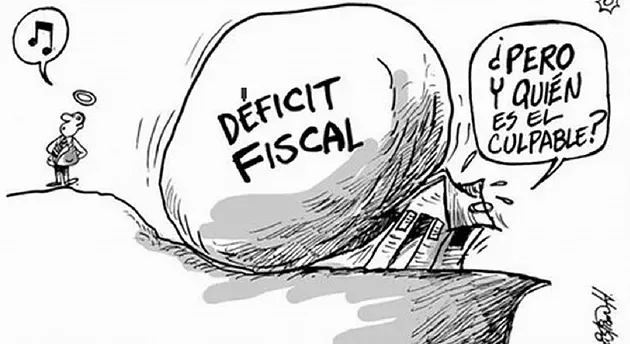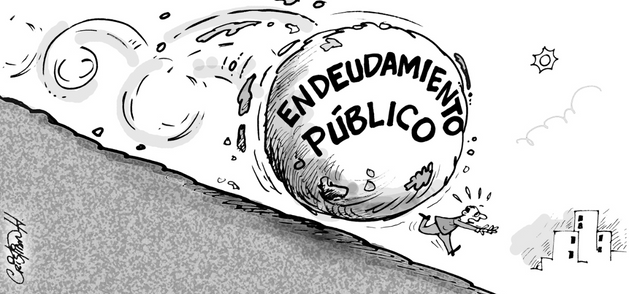Displacement effect.
As we already know, taxes do not cover all transfers and the purchases of goods and services made by the States are what explain that a deficit is incurred.

There are basically three ways to finance public spending:
1.- Establishment of taxes.
2.- Creation of money.
3.- Issuance of public debt.
The use of taxes poses some limitations. These derive precisely from the fact that in many cases what is required is to finance the deficit expenses, that is, those that are above the established taxes.
When issuing money to finance the increase in public sector expenditures, an expansive monetary policy will have to be implemented, and its effects will depend on the state of the economy, that is, close to full employment or in a depression.
The third possibility is that the public sector finances deficit spending through the issuance of public debt.
The public debt consists of debt securities that the State puts in the hands of the public.

Public debt grows as a result of budget deficits. Frequently it is considered a burden, since it is the debt of the entire country.
Think, however, that the taxpayers who finance interest payments by the public sector make such payments to those who hold the State's securities and receive the interest. Therefore, the existence of public sector debt implies the transfer of funds from one social group, taxpayers who finance interest payments, to another at the same time and not in a transfer between persons from one period to another.
The displacement or expulsion effect.
In any case, the effects of public debt are not solely distributive. Thus, when the public sector collects taxes to pay interest, it can create an excess of fiscal burden and discourage work.

On the other hand, an increase in debt can displace private investment when said increase implies a hardening of financial conditions; either because interest rates are raised by channeling available funds towards the purchase of government securities or because the available financial resources are reduced.
The displacement effect occurs when public spending, the budget deficit or public debt reduce the amount of investment of the companies.
Although the term is often used loosely, there are two general conditions for the displacement effect to occur. First, public spending can expel private investment due to resource limitations. If the economy is in a situation of full employment, that is, when potential production has been reached, an increase in public spending will displace private investment. Second, the displacement effect can occur when interest rates rise markedly due to the growth of public debt and reduce private investment sensitive to interest rates.

The theoretical support of the displacement effect.
The first arguments used to support the presence of the negative displacement effect are found in classical economists, who considered private investment sufficient to absorb the funds provided by savings and put the economy in its position of full employment. Given this situation, any action by the public sector would affect spending, regardless of how public spending was financed.
In any case, it should be noted that it was Keynes himself who contributed two basic ideas that theoretically justify the possible presence of the displacement effect. The first refers to the increase in the interest rate that the financing of fiscal policy may originate by displacing part of private spending sensitive to it and the second highlights the possibility that fiscal activity affects the future expectations of the private sector, increasing the demand for money and / or reducing the return on capital.

For the classical economists, in the economic system there are self-correcting mechanisms that eliminate the imbalances, being therefore unnecessary the state stabilizing intervention.
The budgetary policy can be summarized in the following three points:
Limit public spending as much as possible.
Neutrality of taxes, insofar as they do not have to alter the relative material situation of taxpayers. The expenses must obey the costs of the services without pretending to alter the positions of the citizens.
The annual budgetary balance should be the basic budgetary rule, since expenses must be financed by taxes.
Publicado en el blog de Cryptofera